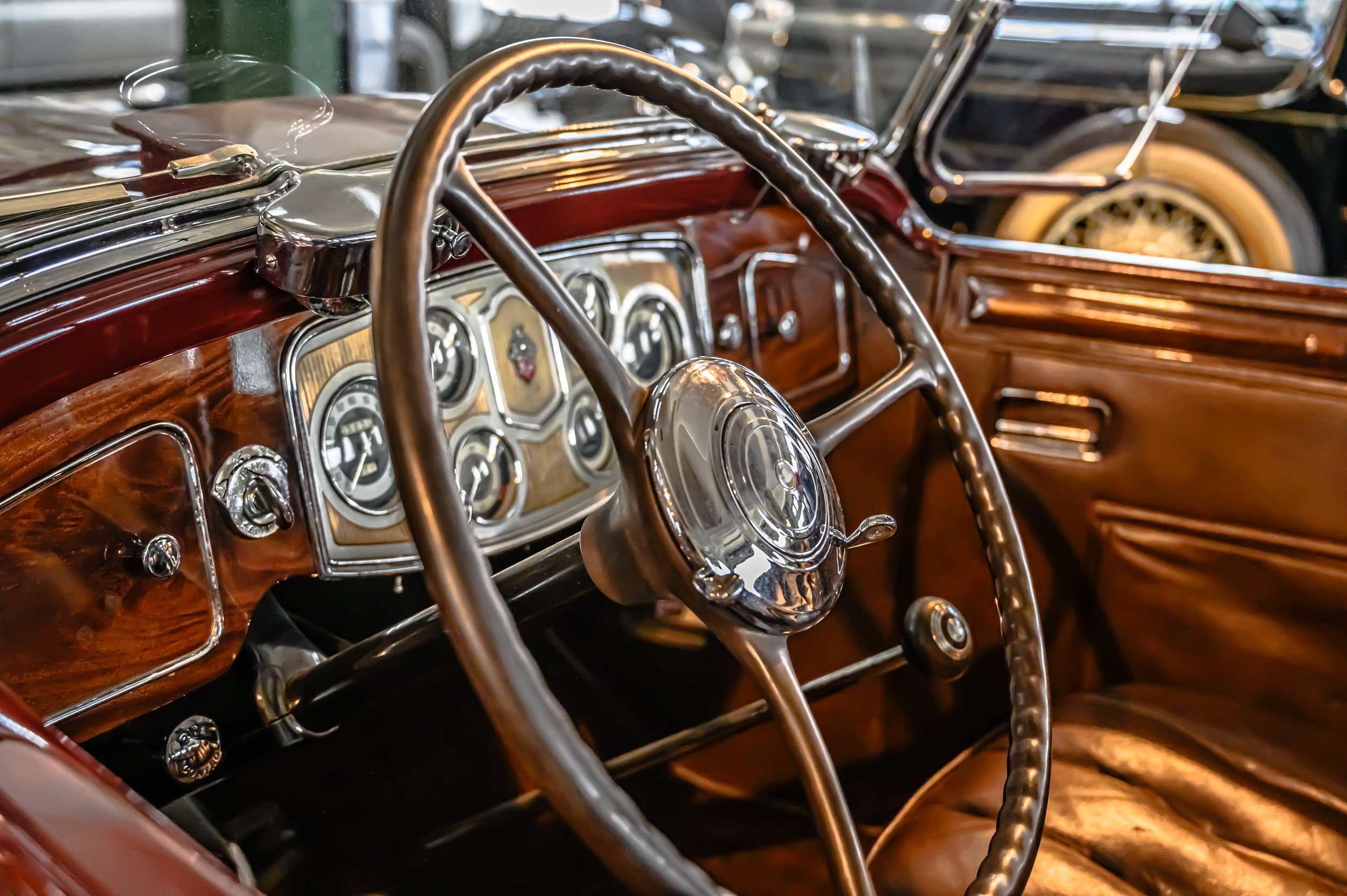
Restoration
Older cars, no matter how valuable, suffer the ravages of use and time. Manufacturers built vehicles for planned obsolescence, and most end up as scrap metal.
Often, owners modified their cars to suit their personal desires, losing all sense of originality. Owners often restored automobiles multiple times because of differences in opinion on technique and personal desires. In the past, owners considered it normal to “over restore” cars to be better than original.
For these reasons, America’s Packard Museum prefers not to restore cars in its collection although many were already restored at some point in their history. The museum carefully documents the modifications, and normally will leave the restoration as is because that is part of the car’s story. Some cars arrive in completely undrivable condition, and a level of restoration is needed. Whenever possible, APM uses original parts, so the final product is a combination of old and new. APM documents each step of the process and tells the story of the restoration which has become part of the car’s history. This reflects our mission to tell the Packard story; and its philosophy of superb design, engineering, and construction; and how this applies to the contemporary world.
It is usual for cars to be damaged or altered during their existence. For example, APM owns the 1903 Gray Wolf (shown below), a Packard Model K car taken off the assembly line, modified to be a race car, crashed, upgraded, and rebuilt multiple times. It was rediscovered in a sorry state and restored in 1972. Was the car restored to its original race car look, or to look like it did after any of its changes? The parts, techniques, methods, and purpose for restoring a car can not match the original. Cars like the Gray Wolf were in a continual state of transformation done as inexpensively and quickly as possible. Even a complete restoration is only a partial reflection of the original car.

